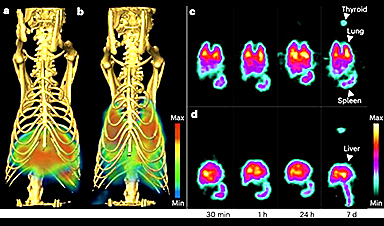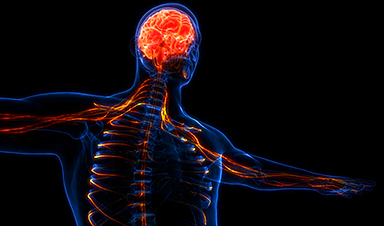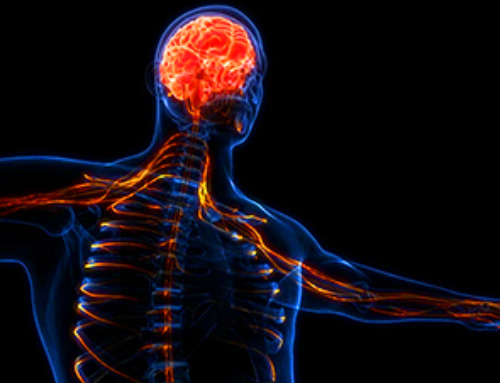In recent years, bio-medical engineers have been developing promising techniques that could help diagnose diseases or precisely target specific regions inside the human body. Among these promising therapeutic strategies are methods that rely on the use of nanoparticles (NPs), tiny particles between 1 and 100 nm in size.
These tiny particles could precisely image regions inside the body or deliver drugs to targeted locations. Despite the potential of NPs, for various reasons their therapeutic advantages have so far been limited.
The first main reason is that these tiny particles‘ size often limits their ability to enter and penetrate key tissues inside the body, rendering them ineffective for delivering drugs at the necessary concentrations. Moreover, when these particles are introduced into the human body, they are often rapidly captured by the reticuloendothelial system (RES), which is responsible for identifying foreign objects and eliminating them from the bloodstream.
Researchers at the Proteogenomics Research Institute for Systems Medicine recently set out to explore the potential of delivering NPs to lung tissue across cellular barriers, leveraging specialized structures known as the caveolae. Their paper, published in Nature Nanotechnology, demonstrates the feasibility of this approach in a series of initial experiments involving adult rats.
“NPs have tremendous yet unmet clinical potential to carry and deliver imaging and therapeutic agents systemically with tissue precision,” Tapas R. Nayak, Adrian Charastina and their colleagues wrote in their paper.
“But their size contributes to rapid scavenging by the reticuloendothelial system and poor penetration of key endothelial cell (EC) barriers, limiting target tissue uptake, safety and efficacy. We discover the ability of the EC caveolae pumping system to outpace scavenging and deliver NPs rapidly and specifically into the lungs.”
The researchers carried out various experiments where they tried to use metallic and dendritic NPs of different sizes to image and deliver drugs to the lungs of rats. To do this, they employed an alternative approach, which relies on the caveolae pumping system (CPS) to extract the particles from the body, as opposed to the RES.
Caveolae are small invaginations on the membrane of cells that can transport molecules across the endothelial cells lining blood vessels. The CPS is the process via which caveolae can transport these molecules to specific tissues, which the team leveraged as part of their study.
“Gold and dendritic NPs are conjugated to antibodies targeting caveolae of the lung microvascular endothelium,” wrote Nayak, Charastina and their colleagues. “SPECT-CT imaging and biodistribution analyses reveal that rat lungs extract most of the intravenous dose within minutes to achieve precision lung imaging and targeting with high lung concentrations exceeding peak blood levels.”
The initial findings are highly promising, as they found that their proposed method enabled the highly precise imaging of the rats’ lungs and the delivery of drugs to targeted lung tissues using NPs, without the issues typically associated with the expulsion of the particles. New studies could further explore the potential of delivering NPs to the lung by targeting the CPS while also shedding light on factors influencing the effectiveness of this approach, such as the size and shape of the particles used.
“These results reveal how much ECs can both limit and promote tissue penetration of NPs and the power and size-dependent limitations of the caveolae pumping system,” wrote Nayak, Charastina and their colleagues.
“This study provides a new retargeting paradigm for NPs to avoid reticuloendothelial system uptake and achieve rapid precision nanodelivery for future diagnostic and therapeutic applications.”
More information: Tapas R. Nayak et al, Rapid precision targeting of nanoparticles to lung via caveolae pumping system in endothelium, Nature Nanotechnology (2024). DOI: 10.1038/s41565-024-01786-z.
Journal information: Nature Nanotechnology
News
New study suggests a way to rejuvenate the immune system
Stimulating the liver to produce some of the signals of the thymus can reverse age-related declines in T-cell populations and enhance response to vaccination. As people age, their immune system function declines. T cell [...]
Nerve Damage Can Disrupt Immunity Across the Entire Body
A single nerve injury can quietly reshape the immune system across the entire body. Preclinical research from McGill University suggests that nerve injuries may lead to long-lasting changes in the immune system, and these [...]
Fake Science Is Growing Faster Than Legitimate Research, New Study Warns
New research reveals organized networks linking paper mills, intermediaries, and compromised academic journals Organized scientific fraud is becoming increasingly common, ranging from fabricated research to the buying and selling of authorship and citations, according [...]
Scientists Unlock a New Way to Hear the Brain’s Hidden Language
Scientists can finally hear the brain’s quietest messages—unlocking the hidden code behind how neurons think, decide, and remember. Scientists have created a new protein that can capture the incoming chemical signals received by brain [...]
Does being infected or vaccinated first influence COVID-19 immunity?
A new study analyzing the immune response to COVID-19 in a Catalan cohort of health workers sheds light on an important question: does it matter whether a person was first infected or first vaccinated? [...]
We May Never Know if AI Is Conscious, Says Cambridge Philosopher
As claims about conscious AI grow louder, a Cambridge philosopher argues that we lack the evidence to know whether machines can truly be conscious, let alone morally significant. A philosopher at the University of [...]
AI Helped Scientists Stop a Virus With One Tiny Change
Using AI, researchers identified one tiny molecular interaction that viruses need to infect cells. Disrupting it stopped the virus before infection could begin. Washington State University scientists have uncovered a method to interfere with a key [...]
Deadly Hospital Fungus May Finally Have a Weakness
A deadly, drug-resistant hospital fungus may finally have a weakness—and scientists think they’ve found it. Researchers have identified a genetic process that could open the door to new treatments for a dangerous fungal infection [...]
Fever-Proof Bird Flu Variant Could Fuel the Next Pandemic
Bird flu viruses present a significant risk to humans because they can continue replicating at temperatures higher than a typical fever. Fever is one of the body’s main tools for slowing or stopping viral [...]
What could the future of nanoscience look like?
Society has a lot to thank for nanoscience. From improved health monitoring to reducing the size of electronics, scientists’ ability to delve deeper and better understand chemistry at the nanoscale has opened up numerous [...]
Scientists Melt Cancer’s Hidden “Power Hubs” and Stop Tumor Growth
Researchers discovered that in a rare kidney cancer, RNA builds droplet-like hubs that act as growth control centers inside tumor cells. By engineering a molecular switch to dissolve these hubs, they were able to halt cancer [...]
Platelet-inspired nanoparticles could improve treatment of inflammatory diseases
Scientists have developed platelet-inspired nanoparticles that deliver anti-inflammatory drugs directly to brain-computer interface implants, doubling their effectiveness. Scientists have found a way to improve the performance of brain-computer interface (BCI) electrodes by delivering anti-inflammatory drugs directly [...]
After 150 years, a new chapter in cancer therapy is finally beginning
For decades, researchers have been looking for ways to destroy cancer cells in a targeted manner without further weakening the body. But for many patients whose immune system is severely impaired by chemotherapy or radiation, [...]
Older chemical libraries show promise for fighting resistant strains of COVID-19 virus
SARS‑CoV‑2, the virus that causes COVID-19, continues to mutate, with some newer strains becoming less responsive to current antiviral treatments like Paxlovid. Now, University of California San Diego scientists and an international team of [...]
Lower doses of immunotherapy for skin cancer give better results, study suggests
According to a new study, lower doses of approved immunotherapy for malignant melanoma can give better results against tumors, while reducing side effects. This is reported by researchers at Karolinska Institutet in the Journal of the National [...]
Researchers highlight five pathways through which microplastics can harm the brain
Microplastics could be fueling neurodegenerative diseases like Alzheimer's and Parkinson's, with a new study highlighting five ways microplastics can trigger inflammation and damage in the brain. More than 57 million people live with dementia, [...]





















